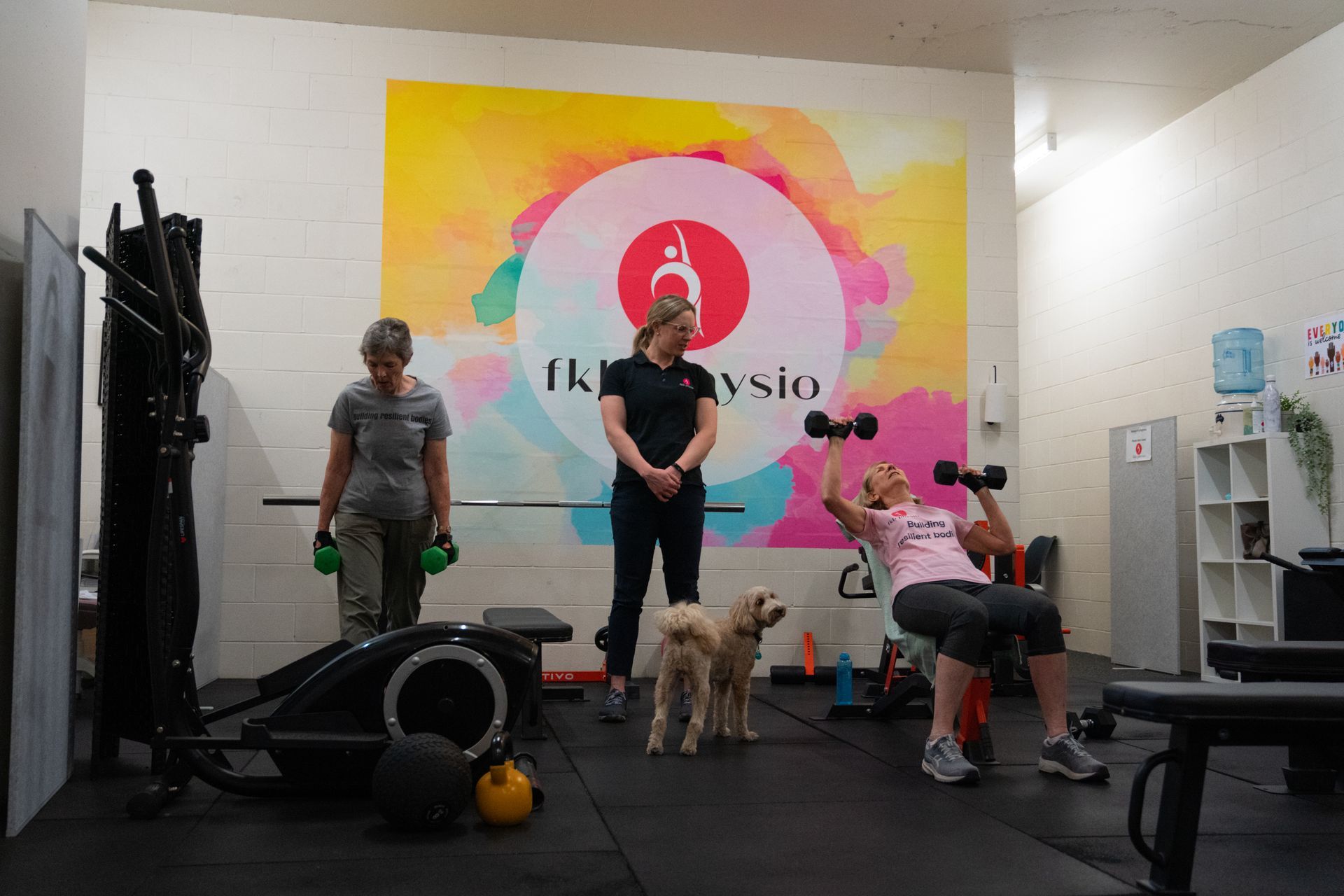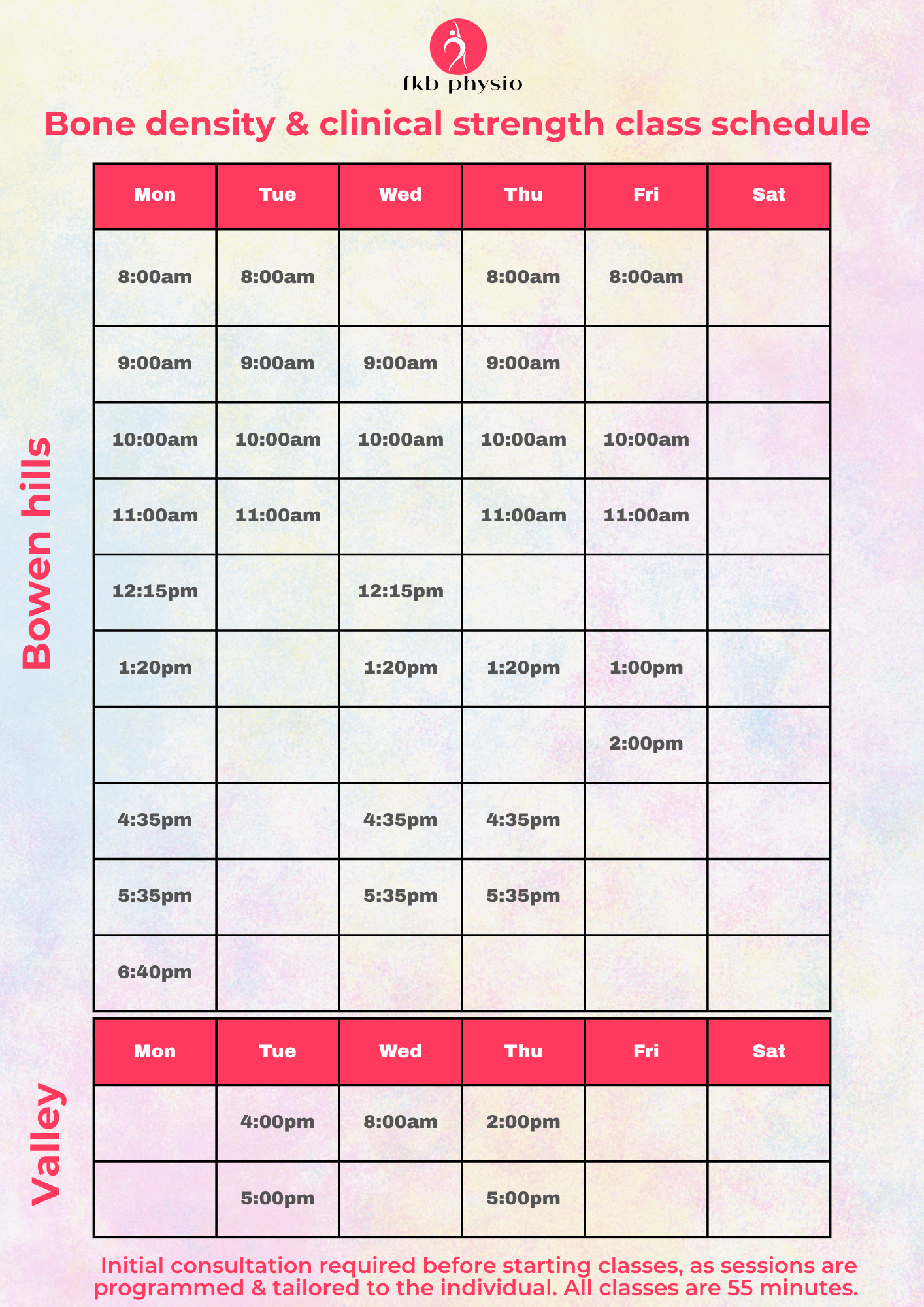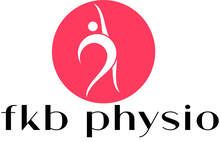Osteoporosis and osteopenia management & physiotherapy to support bone health

Why do I need to start thinking about my bone health?
Unfortunately we start to lose bone density very slowly from the age of 30, a process which accelerates post menopause. As a result, more than 2/3 of all Australian women over 50 have osteopenia or osteoporosis.
The good news:
Research consistently shows that strength training is able to slow down bone loss, and in some cases even improve bone density. Additionally, exercise improves overall strength and balance, reducing the risk of falls as well.
It's never too late to get started.
We offer 1:1 tailored bone health plans that you can complete at home, as well as supervised gym-based options. You have the choice of attending supervised sessions individually or in a small group setting.
At your first appointment, we:
- Interpret your DEXA scan
- Discuss lifestyle factors such as diet and exercise that can influence bone health
- Go over your past exercise and medical history
- Come up with a tailored plan to target your bone health, in conjunction with the other members of your healthcare team such as your GP, endocrinologist, and/or dietician.
Check out our blog post and podcast episode about bone health
Download our osteoporosis e-book
Small group bone density classes at FKB Physio
Physiotherapy led bone density classes are a great way to introduce yourself to strength training if you've never done it before, or if you want a more specific personalised program. Classes are tailored to your needs, and each person in the class follows their own program, so you don't need to worry about feeling like you'll fall behind. You do not need any experience with exercise to get started with us. For those of you already comfortable in the gym, our physios can encourage you to safely progress your weights and build your strength a bit further.
How our classes work
At your initial assessment, we go over your past medical and exercise history to get an idea of where you are currently at. Then we go through movements that are achievable for your current level of function, and design you a program based on that. We
record your progress each week so that we have a clear progression going forward, to ensure you continue to see improvements.
While both FKB locations are based inside gyms, the Bowen Hills location is private and open only to FKB Physio clients, just like you, most of whom have never stepped foot inside a gym before coming to us.
Most of our classes are run at Bowen Hills. Classes are led by Katherine, Sarah, and Jaslynn. Learn more about our physios here.
Bone density classes at FKB
- No more than 4 in a class
- Physio led and designed
- Progressed over time
- Weights recorded
- Tailored to each individual (initial assessment required first)
- $45 per class
- Can be claimed on private health (Hicaps on site)
- Care plans from Medicare accepted
Please note: we do not claim to be able to fix or reverse osteoporosis or osteopenia; our classes and programs are evidence based according to best practice guidelines for exercise for Osteoporosis but we cannot make any claims relating to outcomes for these conditions. Do not attempt any exercises shown in the videos without professional supervision.

What you can expect in our classes:
What to expect at your classes:
What to expect after a few months or years in the class (some of our advanced members!):
References
- Beck, B. R., Daly, R. M., Singh, M. A., & Taaffe, D. R. (2017). Exercise and Sports Science Australia (ESSA) position statement on exercise prescription for the prevention and management of osteoporosis. J Sci Med Sport, 20(5), 438-445. https://doi.org/10.1016/j.jsams.2016.10.001
- Daly, R. M., Dalla Via, J., Duckham, R. L., Fraser, S. F., & Helge, E. W. (2019). Exercise for the prevention of osteoporosis in postmenopausal women: an evidence-based guide to the optimal prescription. Braz J Phys Ther, 23(2), 170-180. https://doi.org/10.1016/j.bjpt.2018.11.011
- Daly, R. M., Dalla Via, J., Duckham, R. L., Fraser, S. F., & Helge, E. W. (2019). Exercise for the prevention of osteoporosis in postmenopausal women: an evidence-based guide to the optimal prescription. Braz J Phys Ther, 23(2), 170-180. https://doi.org/10.1016/j.bjpt.2018.11.011
- Howe, T. E., Shea, B., Dawson, L. J., Downie, F., Murray, A., Ross, C., Harbour, R. T., Caldwell, L. M., & Creed, G. (2011). Exercise for preventing and treating osteoporosis in postmenopausal women. Cochrane Database Syst Rev(7), Cd000333. https://doi.org/10.1002/14651858.CD000333.pub2
- Kemmler, W., Häberle, L., & von Stengel, S. (2013). Effects of exercise on fracture reduction in older adults: a systematic review and meta-analysis. Osteoporos Int, 24(7), 1937-1950. https://doi.org/10.1007/s00198-012-2248-7
- Watson, S. L., Weeks, B. K., Weis, L. J., Harding, A. T., Horan, S. A., & Beck, B. R. (2018). High-Intensity Resistance and Impact Training Improves Bone Mineral Density and Physical Function in Postmenopausal Women With Osteopenia and Osteoporosis: The LIFTMOR Randomized Controlled Trial [https://doi.org/10.1002/jbmr.3284]. Journal of Bone and Mineral Research, 33(2), 211-220. https://doi.org/https://doi.org/10.1002/jbmr.3284

